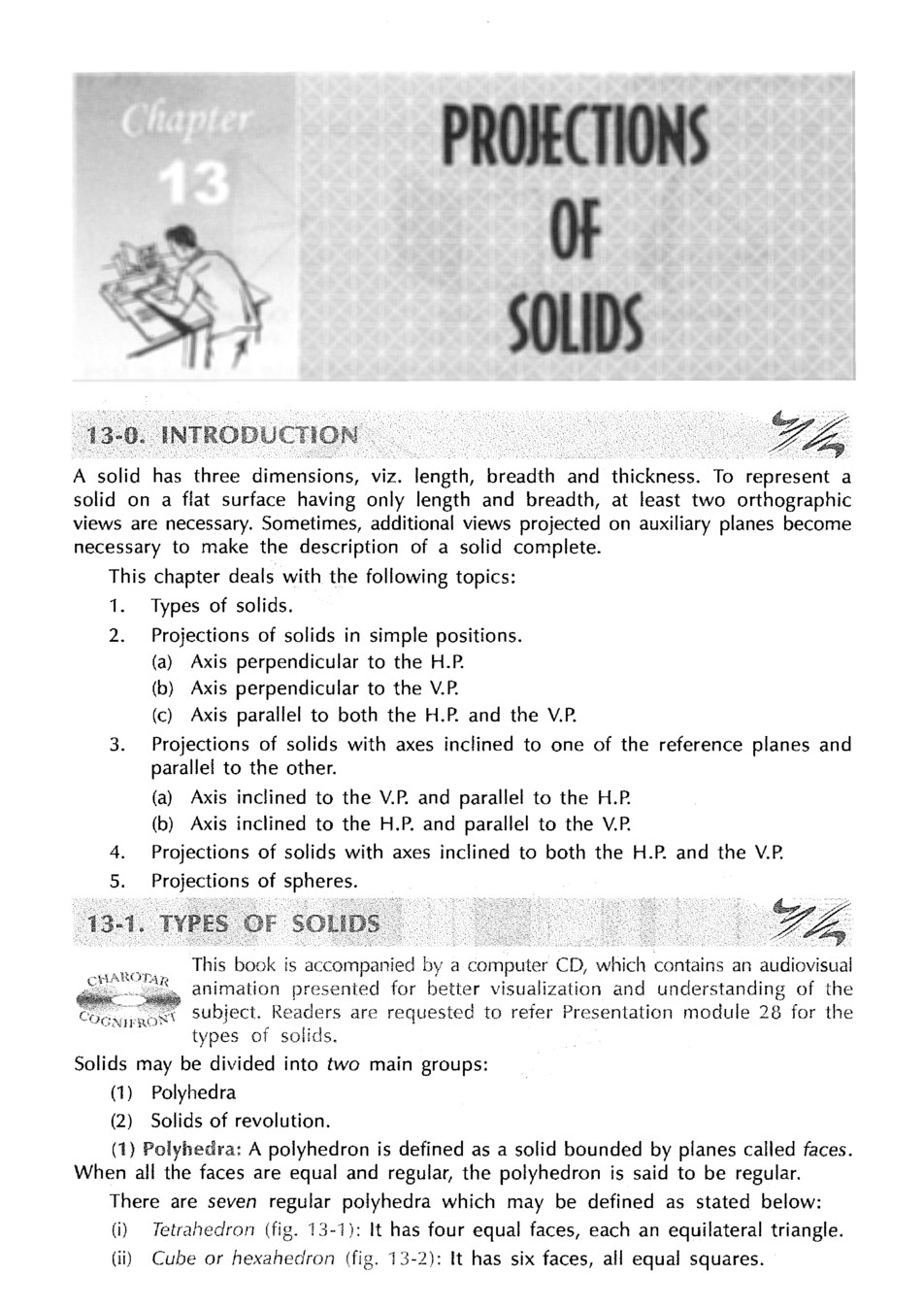Projection of Solids
Projection of Solids
Projection of Solids
Introduction
A solid in engineering drawing is characterized by three dimensions - length, breadth, and thickness. When representing a solid on a two-dimensional surface, such as a flat sheet of paper, at least two orthographic views are required. This chapter delves into various topics related to the projection of solids, including types of solids, projections in different positions, and projections of spheres.
Types of Solids
Solids can be broadly categorized into two main groups: polyhedra and solids of revolution. Polyhedra are solids bounded by planes known as faces. When all faces of a polyhedron are equal and regular, it is classified as a regular polyhedron. The chapter lists seven regular polyhedra, such as the tetrahedron, cube, octahedron, dodecahedron, icosahedron, prism, and pyramid.
Solids of Revolution
Solids of revolution include the cylinder, cone, and sphere. A cylinder is formed by the revolution of a rectangle about one of its sides, resulting in two circular bases. A cone is generated by the revolution of a right-angled triangle about one of its sides, and it has a single circular base. A sphere is created by rotating a semicircle around its diameter. The chapter also discusses frustums and truncated solids.

